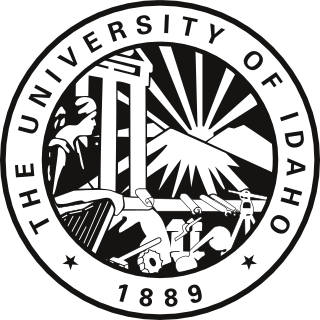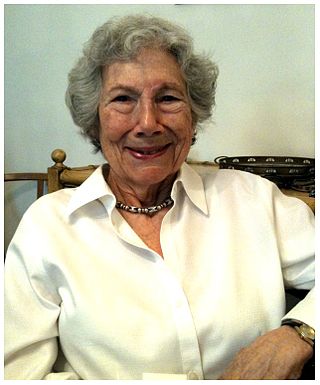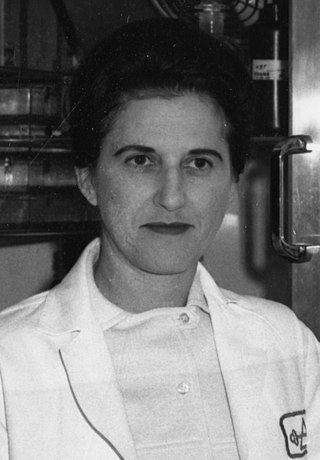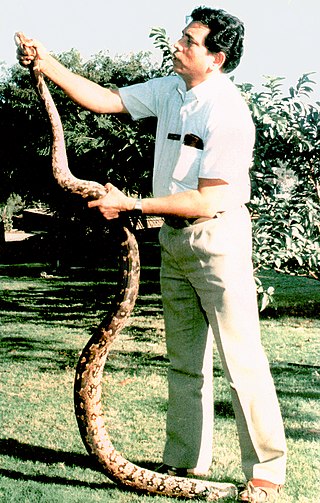
The University of Idaho is a public land-grant research university in Moscow,Idaho. It is the state's land-grant and primary research university,and the lead university in the Idaho Space Grant Consortium. The University of Idaho was the state's sole university for 71 years,until 1963. Its College of Law,established in 1909,was first accredited by the American Bar Association in 1925.

Wildlife conservation refers to the practice of protecting wild species and their habitats in order to maintain healthy wildlife species or populations and to restore,protect or enhance natural ecosystems. Major threats to wildlife include habitat destruction,degradation,fragmentation,overexploitation,poaching,pollution,climate change,and the illegal wildlife trade. The IUCN estimates that 42,100 species of the ones assessed are at risk for extinction. Expanding to all existing species,a 2019 UN report on biodiversity put this estimate even higher at a million species. It is also being acknowledged that an increasing number of ecosystems on Earth containing endangered species are disappearing. To address these issues,there have been both national and international governmental efforts to preserve Earth's wildlife. Prominent conservation agreements include the 1973 Convention on International Trade in Endangered Species of Wild Fauna and Flora (CITES) and the 1992 Convention on Biological Diversity (CBD). There are also numerous nongovernmental organizations (NGO's) dedicated to conservation such as the Nature Conservancy,World Wildlife Fund,the Wild Animal Health Fund and Conservation International.
Noninvasive genotyping is a modern technique for obtaining DNA for genotyping that is characterized by the indirect sampling of specimen,not requiring harm to,handling of,or even the presence of the organism of interest. Beginning in the early 1990s,with the advent of PCR,researchers have been able to obtain high-quality DNA samples from small quantities of hair,feathers,scales,or excrement. These noninvasive samples are an improvement over older allozyme and DNA sampling techniques that often required larger samples of tissue or the destruction of the studied organism. Noninvasive genotyping is widely utilized in conservation efforts,where capture and sampling may be difficult or disruptive to behavior. Additionally,in medicine,this technique is being applied in humans for the diagnosis of genetic disease and early detection of tumors. In this context,invasivity takes on a separate definition where noninvasive sampling also includes simple blood samples.

The Gobi bear,known in Mongolian as the Mazaalai (Мазаалай),is a subspecies of the brown bear that is found in the Gobi Desert of Mongolia. It is listed as critically endangered by the Mongolian Redbook of Endangered Species and by IUCN standards. Currently,there are only 31 bears left in the Mongolian Gobi Desert,which results are based on the long-term genetic monitoring and the population is relatively stable,however,the sex ratio is highly skewed towards to males. Gobi bears are separated by enough distance from other brown bear populations to achieve reproductive isolation. In 1959,hunting of the animal was prohibited in order to preserve the dying subspecies.

Evelyn M. Witkin was an American bacterial geneticist at Cold Spring Harbor Laboratory (1944–1955),SUNY Downstate Medical Center (1955–1971),and Rutgers University (1971–1991). Witkin was considered innovative and inspirational as a scientist,teacher and mentor.
Kenneth L. Krysko is an American herpetologist. He was educated at Florida State University during his undergrad years and then at the University of Florida,where he earned his Ph.D. in Wildlife Ecology and Conservation. He is known for his expert knowledge on geckos and other invasive species in Florida. He is currently the collection manager of Herpetology at the Florida Museum of Natural History.

Beatrice Mintz was an American embryologist who contributed to the understanding of genetic modification,cellular differentiation,and cancer,particularly melanoma. Mintz was a pioneer of genetic engineering techniques and was among the first scientists to generate both chimeric and transgenic mammals.

Wildlife forensic science is forensic science applied to legal issues involving wildlife. Wildlife forensic sciences also deal with conservation and identification of rare species and is a useful tool for non-invasive studies. Methods can be used to determine relatedness of the animals in the area allowing them to determine rare and endangered species that are candidates for genetic rescue. Techniques using things such as the SSCP or Single-Strand Conformational Polymorphism gel electrophoresis technique,microscopy,DNA barcoding,Mitochondrial Microsatellite Analysis and some DNA and Isotope analysis can identify species and individual animals in most cases if they have already been captured. Unlike human identification,animal identification requires determination of its family,genus,and species,and sex in order to individualize the animal,typically through the use of DNA based analyses.

Jennifer Anne Doudna is an American biochemist who has done pioneering work in CRISPR gene editing,and made other fundamental contributions in biochemistry and genetics. Doudna was one of the first women to share a Nobel in the sciences. She received the 2020 Nobel Prize in Chemistry,with Emmanuelle Charpentier,"for the development of a method for genome editing." She is the Li Ka Shing Chancellor's Chair Professor in the department of chemistry and the department of molecular and cell biology at the University of California,Berkeley. She has been an investigator with the Howard Hughes Medical Institute since 1997.
Catherine L. Malone is an American biologist and an author and co-author of biological subjects including works on biogeography and genetic variation.

Rebecca Nicole Johnson is an Australian scientist (geneticist) and science communicator. Since April 2015,Johnson has been Director and Chief Scientist of the Australian Museum Research Institute (AMRI),Sydney,the first female to be appointed to the role since the establishment of the Australian Museum in 1827. She is also head of the Australian Museum's Australian Centre for Wildlife Genomics,a wildlife forensics laboratory based at the Australian Museum.

Lalji Singh FNA,FASc was an Indian scientist who worked in the field of DNA fingerprinting technology in India,where he was popularly known as the "Father of Indian DNA fingerprinting". Singh also worked in the areas of molecular basis of sex determination,wildlife conservation forensics and evolution and migration of humans. In 2004,he received the Padma Shri in recognition of his contribution to Indian science and technology.

Katherine Belov is an Australian geneticist,professor of comparative genomics in the School of Life and Environmental Sciences and Pro Vice Chancellor of Global Engagement at the University of Sydney. She is head of the Australasian Wildlife Genomics Group and research expert in the area of comparative genomics and immunogenetics,including Tasmanian devils and koalas,two iconic Australian species that are threatened by disease processes. Throughout her career,she has disproved the idea that marsupial immune system is primitive,characterized the South American gray short-tailed opossum's immune genes,participated in the Platypus Genome Project,led research identifying the properties of platypus venom,and identified the cause of the spread of the Tasmanian devil's contagious cancer.
Uma Ramakrishnan is an Indian molecular ecologist and professor at National Centre for Biological Sciences (NCBS),Bangalore. Her research investigates population genetics and evolutionary history of mammals in the Indian subcontinent,including work to save India’s tigers. In July 2019,she was elected as a fellow to the Indian National Science Academy.
Carol Ann Stepien is an American ecologist at the National Museum of Natural History of the Smithsonian Institution. She was elected a fellow of the American Association for the Advancement of Science in 2016.

Carla Pedro Gomes is a Portuguese-American computer scientist and professor at Cornell University. She is the founding Director of the Institute for Computational Sustainability and is noted for her pioneering work in developing computational methods to address challenges in sustainability. She has conducted research in a variety of areas of artificial intelligence and computer science,including constraint reasoning,mathematical optimization,and randomization techniques for exact search methods,algorithm selection,multi-agent systems,and game theory. Her work in computational sustainability includes ecological conservation,rural resource mapping,and pattern recognition for material science.
Kathryn M. Roeder is an American statistician known for her development of statistical methods to uncover the genetic basis of complex disease and her contributions to mixture models,semiparametric inference,and multiple testing. Roeder holds positions as professor of statistics and professor of computational biology at Carnegie Mellon University,where she leads a project focused on discovering genes associated with autism.
Therese Ann Markow is the Amylin Chair in Life Sciences at the University of California,San Diego. Her research involves the use of genetics and ecology to study the insects of the Sonoran Desert. She was awarded the Presidential Early Career Award for Scientists and Engineers in 2001 and the Genetics Society of America George Beadle Award in 2012. Her research received widespread attention for its alleged misuse of Native American genetic data.

Mamie Parker is an American biologist,conservationist,executive coach,facilitator,and inspirational speaker from Wilmot,Arkansas. She holds a PhD in limnology from the University of Wisconsin and spent 30 years with the United States Fish and Wildlife Service (USFWS) in a variety of positions in Wisconsin,Minnesota,Missouri,Georgia,and Washington,D.C. Highly regarded as a pioneer in the field,she was the first Black woman to serve as the assistant director of Fisheries and Habitat Conservation and the first African American to lead a USFWS regional office when she served as the Northeast Service Regional Director,covering 13 northeastern states. She also served as USFWS Chief of Staff and Chief of Fisheries. She received the US government's highest honor for career service employees for her accomplishments,the Presidential Rank Meritorious Service Award,and in 2005 was the first African American inducted into the Arkansas Outdoor Hall of Fame. Since retiring from USFWS,she has worked as an executive leadership coach,inspirational speaker,and environmental consultant with Ma Parker and Associates and EcoLogix Group,Inc. She is on the board of directors of the National Wildlife Federation,Chesapeake Bay Foundation,Duke University Nicholas School of the Environment,The Nature Conservancy-Virginia Chapter,American University School of Public Affairs,Ducks Unlimited,and the Student Conservation Association. Throughout her career she has worked to advance diversity and opportunities for minority students in conservation and fisheries careers;in 2016 she was awarded the Emmeline Moore Prize from the American Fisheries Society for these efforts.

Yadvendradev Vikramsinh Jhala is an Indian scientist and conservationist who recently ended his tenure as the Dean at the Wildlife Institute of India in Dehradun.












